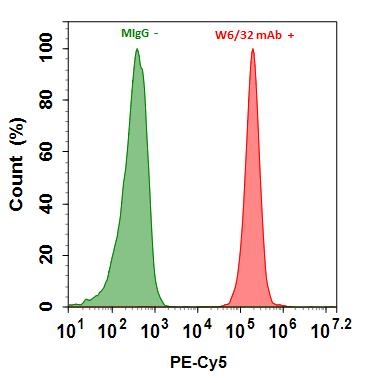Buccutite™ Rapid Protein Crosslinking Kit
Microscale Optimized for Crosslinking 100 ug Antibody Per Reaction
Protein-protein conjugations are commonly performed with a bifunctional linker such as SMCC. One end of the SMCC reacts (via NHS ester) with amines (-NH2) found in the amino acid lysine and N-terminus, and the other end reacts (via maleimide) with the thiol groups (-SH) found in the amino acid cysteine. However, SMCC-modified protein is extremely unstable and often self-reactive since proteins often contain both amine and thiol groups that cause significant amount of homo-crosslinking. In addition it is quite difficult and tedious to quantify the number of maleimide groups on a protein. AAT Bioquest has developed a convenient and effective crosslinking method to link two biomolecules with a high conjugation yield. Our method uses one pair of crosslinkers: Buccutite™ MTA and Buccutite™ FOL. MTA is added to one protein, while FOL is added to another protein. Protein-protein cross-linking reaction is initiated by mixing Protein-1-Buccutite ™ MTA and Protein-2-Buccutite ™ FOL. This crosslinking reaction occurs under extremely mild neutral conditions without any catalyst required, and it is robust and efficient.


| Catalog | Size | Price | Quantity |
|---|---|---|---|
| 1315 | 2 Labelings | Price |
Storage, safety and handling
| H-phrase | H303, H313, H333 |
| Hazard symbol | XN |
| Intended use | Research Use Only (RUO) |
| R-phrase | R20, R21, R22 |
| UNSPSC | 12352200 |
Documents
Contact us
| Telephone | |
| Fax | |
| sales@aatbio.com | |
| International | See distributors |
| Bulk request | Inquire |
| Custom size | Inquire |
| Technical Support | Contact us |
| Request quotation | Request |
| Purchase order | Send to sales@aatbio.com |
| Shipping | Standard overnight for United States, inquire for international |
Page updated on January 6, 2026
